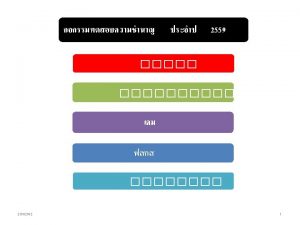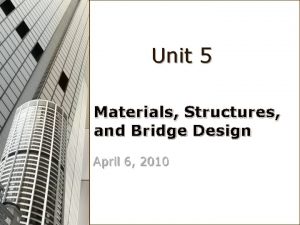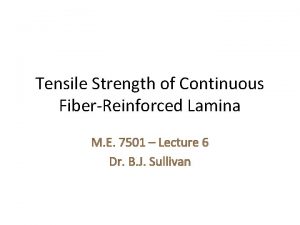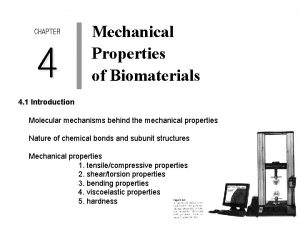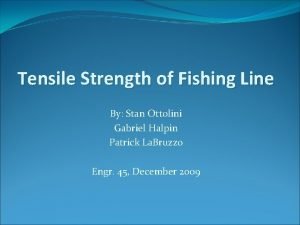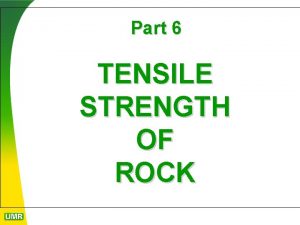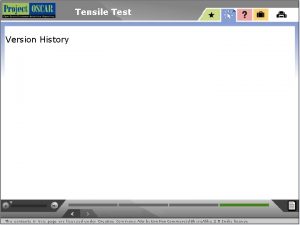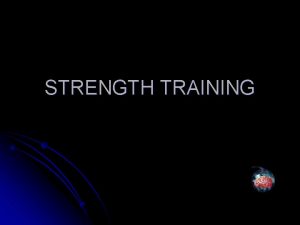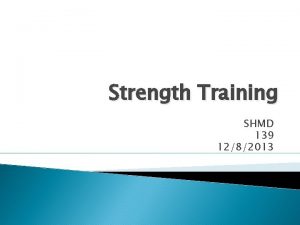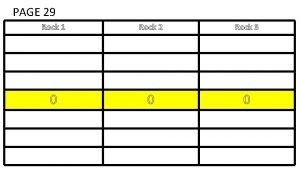Part 6 TENSILE STRENGTH OF ROCK Tensile Failure














- Slides: 14

Part 6 TENSILE STRENGTH OF ROCK

Tensile Failure Modes • Rock is much weaker in tension than in compression. • Most rock failures involve tensile fractures • Three types: direct tension; flexural tension; and indirect tension

• The bending stress influences the ultimate shear strength of rock slabs. Like concrete, rock is weak in induced tension. A small amount of confinement or tensile reinforcement can have a significant impact on strength.

Induced Tension (Brazilian) test • The Brazilian splitting tension test is the most commonly employed for rock • Concrete strength is usually about 1/12 th the compressive strength • In rock, the tensile strength can vary between 1/12 th and 1/70 th of the compressive strength, depending on porosity and weathering.

• The Brazilian splitting tension test loads a cylinder core of rock with 0. 5: 1 length-to-diameter ratio loaded over 15% of the circumference, until the load falls off and a hairline crack forms, shown at right

• These diagrams illustrate how the elastic modulus in compression and tension can be measured.

• Direct tension test for an unconfined rock core, taken to rupture. Note how the elastic modulus is less in tension than in compression, and how it diminishes above 80% of the peak strength.

• Tensile strength can be significantly reduced by load cycling, as shown in these tests.

• Definitions of loading geometry for splitting tension tests

• Strength anisotropy in splitting tension tests on Entrada Sandstone

• Layered rocks are highly anisotropic and can be expected to exhibit lower splitting tensile strength parallel to planes of bedding. This plot also illustrates the scale effect, varying specimen diameter

• Variation in splitting tensile strength with bed inclination, varying the length-to-depth ratio of the rock cylinders, as shown.

• Splitting tension test data on soft to brittle rock, compared with concrete and Griffith failure criterion

• Note how the ratio between compressive and tensile strength degrades with increasing compressive strength. In particular, note envelope of data for concrete and the impact on anisotropy in layered sedimentary rocks.
 Steel bar
Steel bar Can igneous rocks form metamorphic rocks
Can igneous rocks form metamorphic rocks Cual es la notacion de lewis para el atomo representado por
Cual es la notacion de lewis para el atomo representado por Reproducible evaluation of material properties
Reproducible evaluation of material properties Lamina
Lamina Abrasion test of aggregate
Abrasion test of aggregate Engineering stress
Engineering stress Zinc amalgam is an alloy of
Zinc amalgam is an alloy of Tensile strength of plastic
Tensile strength of plastic Tensile strength
Tensile strength Fishing line breaking strength
Fishing line breaking strength Ductile fracture surface
Ductile fracture surface Failure to capture vs failure to sense ecg
Failure to capture vs failure to sense ecg Failure to capture vs failure to sense
Failure to capture vs failure to sense Darrow's solution composition
Darrow's solution composition
